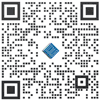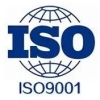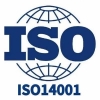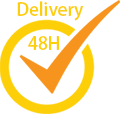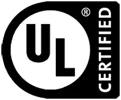Lidar, Camera and ultrasound: The technology behind ADAS systems
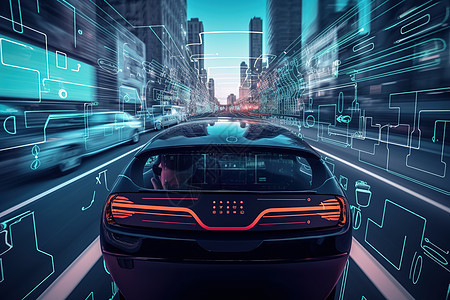
In today's intelligent driving technology, ADAS (Advanced Driver Assistance System) has become an important part of vehicle safety and automation. In recent years, with the rapid development of autonomous driving technology, Lidar, cameras and ultrasonic sensors, as the main sensing tools, play an indispensable role in ADAS systems. Each of these three technologies has its unique characteristics and advantages, which provide reliable support for the realization of intelligent transportation.
Lidar: Accurate range measurement and environmental awareness
LiDAR (Light Detection and Ranging) is a distance measurement technology based on laser pulses, which calculates the distance between an object and a sensor by emitting a laser beam and receiving the light signal reflected. Lidar has become an indispensable part of ADAS system because of its high precision and high resolution.
The core advantage of LiDAR is its comprehensive environmental awareness. With a full dimensional scan of 360 degrees, Lidar is able to accurately construct a three-dimensional map of the space around the vehicle. This feature makes LiDAR ideal for obstacle identification and obstacle avoidance in complex environments. Whether on city streets or highways, LiDAR can accurately detect the location and distance of obstacles such as pedestrians and vehicles, thus providing strong support for the safe driving of cars.
Lidar's high scanning frequency and long-range detection capabilities also enable it to maintain excellent performance at high speeds. Compared with traditional vision sensors, lidar is not limited by light and weather conditions, and can still work accurately in dark or harsh climate conditions. This makes Lidar an important technology for achieving high safety autonomous driving.
However, liDAR is not without its drawbacks. Their high cost and relatively large size compared to other sensors may affect their application in some models. In addition, Lidar has limited object recognition ability for certain transparent or reflective materials, which also limits its application scenarios to a certain extent.
Camera: Rich visual information and intelligent recognition
As one of the most commonly used sensors in ADAS system, the camera can provide rich image information. Through the analysis of the captured images, the camera can identify lane lines, traffic signs, pedestrians and other vehicles, to achieve a driving assistance function.
The advantage of the camera is its ability to capture color and shape information, making it very good at identifying various visual elements in the traffic environment. Using computer vision technology, cameras can automatically recognize traffic signs and provide information to drivers. For example, when a vehicle approaches a speed limit sign, the system can issue a warning to alert the driver to the speed limit.
Modern cameras are often equipped with high resolution and wide viewing angles, which can greatly improve the effectiveness of information acquisition. High-definition cameras, in particular, can clearly capture subtle visual information, such as the license plates of other vehicles and the status of traffic lights. In addition, the application of composite viewing Angle technology makes the camera more flexible when dealing with complex environments.
However, the performance of the camera can also be affected by external factors, such as bright light, shadows, or rain and snow weather can cause image distortion and affect the recognition accuracy. Therefore, cameras often need to be used in conjunction with other sensors to ensure good performance under a variety of conditions.
Ultrasonic sensor: short detection distance, accurate ranging
Ultrasonic sensor has become one of the most common close detection technologies in ADAS system because of its low cost and relatively simple structure. The working principle of ultrasonic sensors is based on the emission and reception of sound waves, and the distance is calculated by measuring the time it takes the sound waves to travel from the sensor to the object and back again. This technology is suitable for low-speed driving scenarios, especially parking assistance systems.
Ultrasonic sensors can accurately determine the distance between the vehicle and surrounding objects, helping drivers avoid obstacles when reversing or parking. This technology is particularly important in preventing collisions in complex urban environments. In addition, due to the large emission Angle of the ultrasonic sensor, it can cover a large monitoring area, further improving the safety of the vehicle.
Although ultrasonic sensors perform well in close detection, their range of use is relatively limited. Ultrasonic detection distance is short, generally within a few meters. In high-speed driving or remote detection scenarios, the application effect of ultrasonic is not obvious. Therefore, ultrasonic sensors are often used in combination with liDAR and cameras to form a complete perception system.
Comprehensive application: Intelligent multi-sensor fusion
In modern ADAS systems, liDAR, cameras, and ultrasonic sensors often coexist and work together to improve environmental awareness and decision support. Through multi-sensor fusion technology, the system can synthesize data from different sensors to form a more accurate and comprehensive environment model.
For example, in actual driving, lidar can provide accurate distance information, cameras are responsible for image recognition and sign recognition, and ultrasonic sensors detect potential obstacles in real time at close range. With the support of various data, ADAS system can effectively identify complex road conditions, respond quickly, and improve driving safety.
This multi-sensor fusion method not only improves the reliability of the system, but also greatly enhances the ability to cope with various complex driving scenarios. With the continuous development of technology, the BZX84B4V7W sensor portfolio in the future ADAS system will be more diversified to achieve a higher level of intelligent driving experience.
In the future, Lidar, cameras and ultrasonic sensors, as an important part of the technical power of ADAS systems, each play a unique role in promoting the continuous development and innovation of intelligent driving.
您可能感興趣的產品
 |
2116 | UNIVERSAL QI WIRELESS CHARGING M | 3438 More on Order |
 |
480 | SMALL ARCADE JOYSTICK | 5526 More on Order |
 |
559 | RUGGED METAL PUSHBUTTON | 7128 More on Order |
 |
2349 | REFLECTIVE IR SENSOR WITH 470 AN | 6066 More on Order |
 |
189 | PIR (MOTION) SENSOR | 7092 More on Order |
 |
1343 | SONIC RANGEFINDER HR-USB-EZ1 | 6714 More on Order |
 |
980 | MAXSONAR RANGEFINDER LV-EZ2 | 2862 More on Order |
 |
4081 | FLAT VIBRATION SWITCH - BREADBOA | 1445 More on Order |
 |
1525 | SOLAR PANEL LARGE 6V 5.6W | 2358 More on Order |
 |
352 | AC/DC DESKTOP ADAPTER 12V 60W | 4428 More on Order |
 |
414 | ELECTROLUMINESC PNL 20X15CM AQUA | 8100 More on Order |
 |
676 | STARTER EL PIPING WELTED 5M AQUA | 3546 More on Order |
 |
415 | ELECTROLUMINESC STRIP 100CM AQUA | 6066 More on Order |
 |
446 | ELECTROLUMINESCN STRIP GRN 100CM | 5706 More on Order |
 |
1558 | ADDRESS LED MODULE SER RGB 1=25 | 5742 More on Order |
 |
3826 | 64X32 FLEXIBLE RGB LED MATRIX - | 5778 More on Order |
 |
2953 | ADDRESS LED STRIP SERIAL RGB 1M | 8244 More on Order |
 |
2871 | ADDRESS LED MATRIX SERIAL RGBW | 8172 More on Order |
 |
2242 | ADDRESS LED STRIP SERIAL RGB 1M | 7650 More on Order |
 |
881 | ADDRESS LED 7 SEG I2C BLUE | 7326 More on Order |
 |
878 | ADDRESS LED 7 SEG I2C RED | 6516 More on Order |
 |
913 | 3.5"" TFT DISPLAY 320 X 240 | 8874 More on Order |
 |
2279 | 64X32 RGB LED MATRIX - 3MM PITCH | 8226 More on Order |
 |
865 | RED 7-SEGMENT CLOCK DISPLAY | 8262 More on Order |
